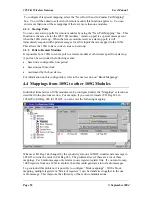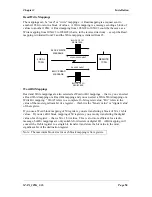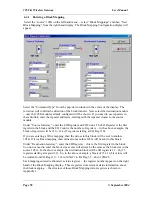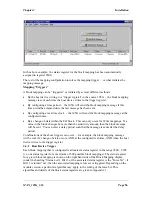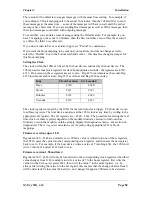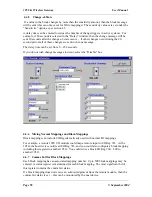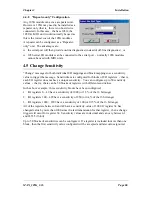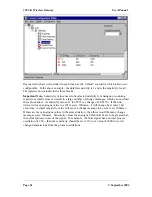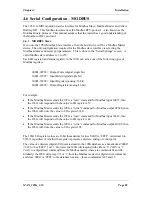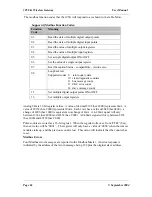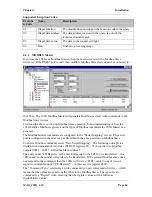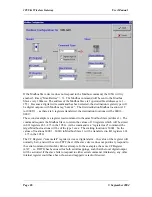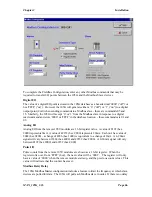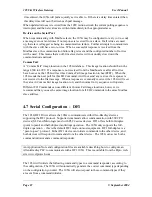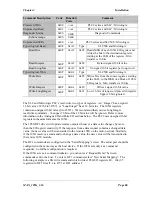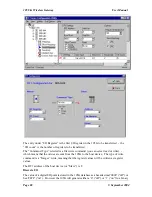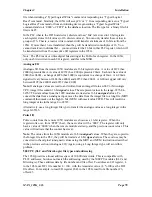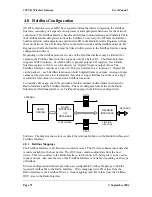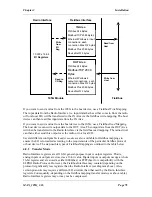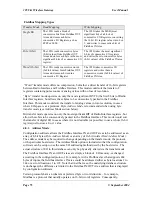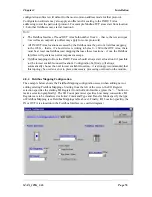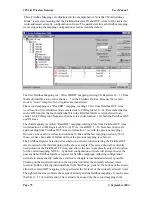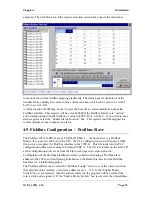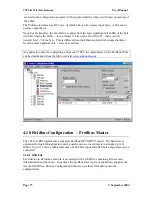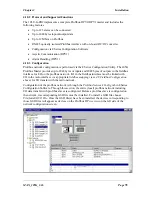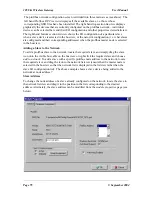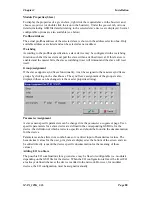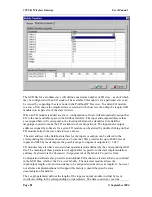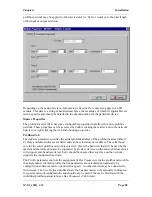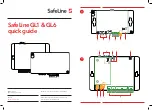
105U-G Wireless Gateway
User Manual
Page 67
© September 2004
time entered, the 105G will poll as quickly as it is able to. If there is a delay time entered, then
this delay time will occur between each poll message.
When updated values are received from the 105U radio network, the current polling sequence is
interrupted, and the new values are written immediately to the appropriate slaves.
Re-tries on the Serial Port
When communicating with Modbus slaves, the 105G may be configured to re-try (or re-send)
a message zero or more times if no response is received from a slave. If all retries are used
up, that slave is flagged as being in communication failure. Further attempts to communicate
with the slave will have zero re-tries. When a successful response is received from the
Modbus slave, the communication failure flag is reset and the configured number of re-tries
will be used. This means that an off-line slave device will not unduly slow down the
communications network.
Comms Fail
A “Comms Fail” image location in the 105G database. This image location should be in the
range 4500 to 4999. If a response is not received from the Modbus slave after all re-tries
have been sent, the 105G will set this Comms Fail image location to hex(FFFF). When the
105G sends the next poll for this I/O Command, it will not send any re-tries if a response is
not received to the first message. When a response is eventually received, the 105G will reset
the value in Comms Fail image location to 0, and the normal re-try sequence will operate.
Different I/O Commands can use different Comms Fail image locations, however we
recommend that you use the same image location for all I/O Commands to the same Modbus
slave address.
4.7
Serial Configuration - DF1
The 105G DF1 Driver allows the 105G to communicate with Allen-Bradley devices
supporting the DF1 protocol. Supported commands allow communication with 500 CPU
devices (SLC and Micrologix) and with PLC2 series devices. DF1 offers both full-duplex
(point to point) and half-duplex (multidrop) operation. The 105G only supports the full-
duplex operation - this is the default DF1 mode on most equipment. DF1 full-duplex is a
“peer-to-peer” protocol. Either DF1 device can initiate commands to the other device, and
both devices will respond to commands from the other device. The 105G can act as both a
command initiator and a command responder.
An Application Note and configuration files are available describing how to configure an
Allen-Bradley PLC to communicate with a DF1 105G. This is available from the Elpro web-
site www.elprotech.com
The 105G will initiate the following command types to a command responder, according to
the configuration. The 105G will automatically generate the correct command type depending
on the configuration you enter. The 105G will also respond to these command types if they
are sent from a command initiator.

